Best Of
We Implemented 120+ Product Ideas From Our Customer Community—Here’s What That Looks Like
Here’s how we use Higher Logic Vanilla to manage product feedback from our customer community, and how you can too.
Our Feedback Process Needed More Structure
Before adopting our own ideation features, our approach to handling customer feedback wasn’t exactly structured. Requests often jumped directly to our founders or circulated through customer success, support, and product teams without a clear workflow. Decisions sometimes felt reactive, guided more by who spoke loudest or most recently rather than by strategic priority.
We realized we needed a clearer, more organized method to capture and prioritize customer ideas, so naturally, we turned to Vanilla.
Here’s a look at how we restructured our product feedback process and ended up implementing over 120 customer-submitted ideas, and counting.
How We Capture and Prioritize Customer Ideas
We knew what our customers wanted because, well, we wanted it too. So we built idea-capturing tools directly into our community platform. Here’s what that looks like in practice.
A Central, Easy-to-Find Home for Ideas
The first step was giving ideas a clear home within our Success Community. We put a prominent “Submit a Product Idea” tile directly on our homepage, with easy access through the main menu as well.
Once you’re there, it’s straightforward to either submit a new idea or explore what others have already suggested.
To keep things organized, we grouped ideas into categories by product area, like analytics improvements or moderation tools. There’s also a dedicated search bar, making it simple to find existing ideas and avoid duplicates. Sorting and filtering tools make browsing easy, anyone can quickly find and follow popular or recent ideas.
Encouraging Community Engagement
After an idea gets submitted, the community can immediately engage—voting on ideas they like and commenting to add more context or help clarify what’s most important to them. Vanilla automatically surfaces the most popular and discussed ideas, making it clear at a glance which suggestions users care about most.
We also lean on Vanilla’s gamification features, awarding points for each upvote an idea gets. It’s a small touch, but it genuinely encourages community participation.
Keeping Everyone Informed
To keep everyone in the loop, we use Vanilla’s custom status labels—like “being considered,” “planned,” “in progress,” or “completed”—so users always know exactly where their ideas stand. These statues display at the bottom of a product idea post, as shown in the image above. Product managers can also add personalized updates directly into the status field, providing additional context or next steps whenever helpful.
To streamline idea management even further, you can configure automated workflows: once an idea reaches a specified number of upvotes, it’s automatically updated to the appropriate status—and you can even trigger an escalation. For example, combine it with notification preferences to email the product manager when an idea gains traction. This helps ensure popular ideas don’t get overlooked.
We also wanted to give users a simple way to track the ideas that matter most to them personally. So we added sections like “My Ideas” and “Ideas I’ve Voted On,” so users can follow along as things develop.
Turning Ideas Into Insights With Built-In Analytics
We use Vanilla’s analytics capabilities to track how ideas are flowing through the system. The out-of-the-box Ideation Dashboard gives us a high-level view of what’s happening—how many new ideas have come in, who’s submitting them, and which ones are getting the most traction through votes, comments, and views. We can filter everything by category or subcommunity to spot trends in different parts of the product.
For more specific needs, we’ve built custom dashboards using Vanilla’s chart editor. It lets us create tailored visualizations, like line graphs or tables, that highlight the data points we care most about. Once the charts are built, we can drag and drop to customize the layout, making it easy to present or share internally.
Bringing Ideation to Our Internal Team
The approach worked so well with our customers, we decided to replicate it internally for our own teams. We created a private ideation area inside Vanilla where employees can securely submit, discuss, and prioritize their own product ideas, giving our internal feedback process the same clarity and ease that our customers were already experiencing.
The best part about building ideation into Vanilla is that nothing about our setup is rigid. Everything—from how ideas are organized to what we call our status labels—is customizable. Which means if you’re thinking about using Vanilla to manage feedback in your own community, you can easily adapt everything we’ve done to fit your unique needs.
What Happens After a Product Idea Is Submitted
Here’s how our product ideation feedback moves internally:
1. Community Submission: Customers submit product ideas directly in our community’s ideation category.
2. Productboard Integration: Ideas automatically sync to Productboard—our team’s product management tool—so votes, comments, and edits become instantly available as organized notes. As you can see in the image below, each note includes the idea title, full description or comment, category details, and direct links to a user’s profiles and their activity.
Our product managers review and prioritize this community feedback weekly, using Productboard to keep a real-time pulse on member insights without manual data transfer.
3. From Productboard to Jira: Once an idea is selected for development, product managers can push it directly into Jira for the engineering team. In the image above, this happens through the “Jira Ticket” column on the right.
Why We Made Our Product Roadmap Public
We also use Vanilla to publicly share our product roadmap directly within the community. It’s actually a Productboard Portal embedded into a Vanilla category using our Layout Editor and a Custom HTML widget. This way, customers can clearly see what’s currently in progress, what’s scheduled next, what’s available in beta, and what’s recently launched.
They can also click into each roadmap item to leave targeted feedback or rate how important a particular feature or improvement is to them.
We release updates about every 2–3 weeks (around 20 times per year). With such a fast release cycle, we’ve found that maintaining a public roadmap is incredibly valuable for both our customers and our internal teams.
For one, customers appreciate the transparency. When they can see what we’re working on, and what’s coming soon, it builds trust and helps them plan ahead. It also saves them (and us) from having to track down updates across emails or support threads. Everything lives in one place, easy to check anytime.
A public roadmap also creates pressure, but a healthy kind. It compels our internal teams to clearly define priorities and timelines, reducing internal ambiguity and increasing alignment across product, sales, marketing, and customer success teams.
And because that visibility cuts down on confusion, we end up fielding fewer repetitive questions about features or fixes that are already in motion.
How Our Advocate Program Strengthens Product Development
We also enhance our ideation process with our Advocate Program. It started with a hand-picked group of active community members and has gradually expanded to include others who express interest, after connecting with our community manager to learn more. Advocates beta test features and discuss ideas directly with our product team. Here’s how it works:
- Each month, we select either a feature for beta testing or host product leadership discussions.
- Advocates get exclusive, early access to new features to stress-test and provide candid feedback.
- All activities take place in a private Advocate group, set up as a gated category in Vanilla and accessible only to members assigned the special “Advocate” role. Discussions, event announcements, and feature previews live here, creating a focused feedback environment.
Beta testing through advocates means a slightly longer development cycle, but fewer post-launch surprises. Our customers gain direct access to our team, influencing our roadmap and helping shape products that genuinely solve their needs.
What We’ve Learned From Listening to Our Customers
Since fully embracing Vanilla’s ideation features, we’ve implemented over 120 customer-submitted ideas, including high-impact improvements like email digests and advanced analytics. Engagement has stayed consistently high, with thousands of upvotes, comments, and views. It’s clear our community genuinely values being involved in shaping the product.
But honestly, the biggest win has been trust. When customers see their ideas turn into actual product updates, they know we’re listening, and that builds real credibility. More than 90% of the customers whose ideas we’ve implemented are still with us. It’s not the only reason they’ve stayed, but it’s a meaningful signal that being heard makes a difference.
What It Takes to Be a Great Community Manager with Izzy Neis
A company decides it’s finally time to build an online community. They buy the software, set up a forum, run a few launch campaigns. Then comes the big question:
“Who’s going to manage this thing?”
Someone in marketing raises their hand. Maybe a support team member gets voluntold. Or, worst case, Bob—who already has three other jobs—gets assigned “community stuff” on top of everything else.
Six months later? Crickets.
This happens all the time. Companies think that just because a community exists, people will naturally engage. That if they set up a platform, members will magically start conversations and keep them going.
But the truth is, a community is only as strong as the person leading it.
A great community manager isn’t just someone who likes social media. They aren’t just an extrovert who enjoys chatting with people. They’re the architect behind everything that makes a community work: strategy, engagement, structure, and sustainability.
Izzy Neis, an industry veteran and Head of Digital at ModSquad, has seen what happens when companies underestimate the role of a community manager. In a recent episode of “Power of Connection,” she broke down the different types of community managers. If you’re hiring a community manager (or stepping into the role yourself), here’s what matters.
What It Takes to Be a Great Community Manager
A great community manager is part strategist, part host, part data analyst, and part customer advocate. It’s a job that requires more than just enthusiasm for online engagement—it demands structure, emotional intelligence, and a clear understanding of what makes a community thrive.
1. They focus on the long game, not just flashy launches.
Some community managers come from a marketing background and excel at creating buzz. They love big campaigns. Events. Contests. Giveaways. The kind of stuff that gets attention fast. But community isn’t just about the launch. It’s about what happens after.
A strong community needs rhythm. It needs structure. It needs reasons for people to come back week after week.
The best community managers understand this. They balance the exciting, high-energy moments with predictable engagement loops that build habit and trust.
What this looks like in practice:
- Recurring engagement: Things like weekly Q&A threads, monthly AMAs, and expert spotlights create reliability.
- Mid-level engagement spikes: Think limited-time challenges, product feedback sessions, or community-led discussions.
- Big moments: These are the summits, hackathons, or industry events that bring in waves of excitement.
If your only community strategy is “big event → silence → big event,” members will check out.
Want a simple way to stay consistent? Grab our content calendar template to map your community’s cadence.
2. They create spaces for others to talk.
There’s a difference between managing a community and dominating it. Some community managers love being the face of the community—posting updates, making videos, and becoming the main voice. But great community managers shift the focus away from themselves and toward the members.
How they do it:
- Peer-to-peer engagement: Instead of answering every question themselves, they encourage members to help each other.
- Super user programs: They identify and nurture top contributors, turning them into community champions.
- Conversation seeding: They start discussions in a way that invites responses, not just statements.
If your community is centered around a single personality (even if that’s the company’s CEO), it’s vulnerable. True community sustainability comes from decentralizing influence and empowering members.
3. They measure the right metrics.
If you’re looking at total member count as your #1 success metric, you’re doing it wrong.
A community’s health isn’t measured by how many people sign up. It’s measured by how engaged they are. Great community managers focus on the right data points. Some of Izzy’s favorites include:
- Daily and Monthly Active Users (DAU/MAU): Who’s actually logging in?
- Engagement rate: Are people commenting, reacting, or starting discussions?
- Retention and return rate: How often do members come back?
- Super user activity: Who are the top contributors driving engagement?
And here’s a big one: lurkers matter. The 90-9-1 rule says that in any given community:
- 90% will mostly observe.
- 9% will occasionally engage.
- 1% will be highly active.
Your strategy should cater to all three groups, not just the vocal few.
Want to track what really matters in your online community? Get our guide to measuring performance, making sense of the data, and proving your community’s impact.
4. They have the right personality for the job.
Community management is a mindset. Some people thrive in this role. Others burn out fast. If you’re hiring internally, don’t just look for who has time. Look for who actually fits.
The best community managers are:
- Naturally curious and invested in building connections.
- Energized by helping others engage, rather than seeking personal attention.
- Good at organizing information, structuring conversations, and keeping track of trends.
- Emotionally intelligent and able to navigate conflicts with a level head.
Use personality tests like 16 Personalities (based on Myers-Briggs) to find candidates who are natural facilitators, connectors, and relationship-builders.
Want more insights? Listen to the full podcast episode
If you want to go deeper, Izzy Neis and Paul Schneider dive into:
- The biggest mistakes companies make when hiring a community manager.
- Why community needs to be designed for long-term success.
- How to measure engagement the right way.
- What makes the best community managers stand out.
Scaling product feedback for product managers
Scaling Product Feedback for Product Managers
10 minute read
March 2, 2021
Over the years, we have seen at Vanilla the real power of customer communities in helping organizations at the tops of their fields through product feedback and innovation. From uncovering unusual ways customers are using products to elaborate workarounds when asked how to solve a specific problem with a product, your customers are your primary allies in building a better product.
In this blog series, I take a deep dive into managing all this information flowing to product management teams and making better decisions by reconciling both internal and external sources of information. You’ll notice that I try to be agnostic with the how, and focus heavily on the what. Each organization builds customer intimacy differently.
My hope is that if you have an existing online community that may have a different purpose, like a community of practice or a customer support community, that you’ll be able to work with your community manager to engage your customers and get their feedback directly on your product vision. And if you don’t have a community right now, that this series becomes a catalyst for you to consider this path of engagement with your customers.
If we take a step back and look at it: product feedback is, quite simply, using the information you have about your customers, their needs, and the market in which you operate to create new products and features.
Putting together the right people with the right ideas at the right time for the right market takes time, resources, and input from all of your stakeholders. And while it can be challenging, it can also be very rewarding.
Here’s the kicker: businesses who leave their customers out of this feedback loop are missing out on amazing opportunities to outstep competitors and better address market needs. Your customers and internal stakeholders offer a unique feedback loop that fuses creative ideas with real-world experiences to provide highly valuable insight.
As with all things related to customers, there’s art and science to effectively dealing with each of their ideas. With so many voices vying for attention, you need a means of effectively dealing with all of the data that will come your way.
Their opinion is important, not just because they are your customers, but because they’re the ones who use the product regularly. They know what they want — it will be up to your team to assess what they actually need. And, you’ll learn how to keep your team members involved throughout this entire process.
In this three part blog series, I’m going to provide you with the strategy you’ll need to deal with and the common pitfalls that come with opening up the inevitable floodgate of feedback that comes when asking customers for their input. This first article will touch on the role of customers, internal stakeholders and challenges of opinions without data. The second blog will discuss how to work with qualitative and quantitative feedback, how real organizations are doing this well and the last article will discuss important success factors along with additional tips and tricks.
Your Customers Are Your Most Valuable Innovation Asset
You’re probably slammed with feedback from multiple sources on a daily basis. You might be wondering why on earth would you want MORE sources of feedback. I hear you. What you need is not more information but better, more centralized information.
We can all agree that you’re searching for relevant data that you can use for product improvements and innovation. You’re looking to prioritize real opportunities from the noise. You want for your product to be the best that it can be. You want the best possible means of gathering information.
This is where engaging your customers the right way can become an incredibly valuable asset. They are using, testing, adapting, and stretching your product to the breaking point. It’s amazing how customers will find unusual ways to use your products — methods your development team may have never thought of when building it.
And more than that, they’ll be likely to form strong opinions about what works and what doesn’t. Rest assured, they will not be afraid to share this information if given the opportunity.
The great part of product feedback from customers is their level of freedom to speak their minds. They do not have the constraints that those inside of an organization might have. As such, they have complete freedom and flexibility in how they offer their feedback.
Customers love when they're brought into the "inner circle" of a company. The ability to provide feedback gives them a sense of belonging. And more than that, it gives them a sense of pride — someone is valuing their opinion. It's a powerful motivator to continue to contribute to the organization’s continuous improvement initiatives.
There's a lot of good that can come from the data you'll collect from your customers. That said, you'll want to be careful in the language that you use when asking your customers for feedback.
The reality is that not all feedback is going to be useful. It's easy to set an expectation that you might not be able to fulfill through the simple act of asking for feedback. Not all feedback will be actionable. There may be requests or suggestions that will be difficult and costly to put in place. Some may not fit the vision of where the company wants to head. Others may only provide benefit to a small group of customers.
The best way to handle this is by setting expectations from the very beginning. Start by being honest with your customers. By doing so, they'll continue to offer you valuable feedback. And, of course, you get to choose which of the feedback you use in your ideation exercises.
Next, let's get into how you're going to involve internal stakeholders in this process. From there, we'll sort out how to put this information together into intelligence that you can use to take action.
- Make a promise to your customers that you will read all contributions. Be crystal clear that you might not act on every piece of feedback.
- It is crucial that customers understand you value them, and their opinions. But, the final decisions on product changes/improvements will rest with the company.
- Although they might have a huge range of ideas, these might not be the best ideas for your product or roadmap.
Consider Interested Internal Stakeholders
Internal Stakeholders are, of course, also a hugely important source of ideas and feedback. Your sales, success and support channels are your ear to the ground and a vital touch point for understanding what is working and why.
Consider also the value that including other, non traditional departments or team members can have. It can be easy to overlook departments such as HR or Legal because “it’s not in their remit” or “they’re too busy” but ideation can come from any staff member.
Too often, certain departments feel isolated and excluded from the conversation. Ensuring all voices are captured not only spreads your likelihood of success, but creates a culture of togetherness that can eradicate the silos that might exist internally.
Be mindful of the dangers of product management by opinion and last customer conversation.
It’s easy for an emotional response to sway a considered, data driven decision, especially when an excited or angry customer conversation is still top-of-mind.
The Product Feedback Loop
The Product Feedback Loop is a multi-faceted approach. It is a blend of both new and old forms of qualitative and quantitative data collection. Using this method, you'll be able to gather feedback at scale.
Let’s walk through an example journey to understand the challenges that you might experience:
Our New Product : ACME WIDGET
ACME WIDGET launches their product. They capture a manageable amount of customer feedback through a mixture of spreadsheets and documents. This seems to be a sensible approach but already the first problem is on the horizon — on its own, this doesn’t scale.
ACME WIDGET is beginning to gain traction. The feedback accelerates and becomes difficult to handle. Ideas and insights are being lost and prioritization is becoming harder and harder.
Additionally feedback from other internal teams and channels is arriving. Now you're getting ideas from people about how they think the product should evolve. They're pointing out bugs that people are finding. And now reaction to customer feedback, and a myriad of other input is creating the perfect storm.
Too much time is being spent...
- Collecting and aggregating feedback from customers
- Working with internal stakeholders to add what they want and what they hear from customers.
- In meetings, trying to convince and appease people
Too little time is being spent...
- Doing meaningful analysis that can move the needle and improve the product
- Focusing on making the right decisions and utilizing colleagues time and skills effectively
As a result...
- Decisions are being made on opinions. The loudest voices are changing the outcome
This often leads to...
- Bad prioritization, lack of focus and skewed decision making. This derails and masks the great data and feedback at your fingertips
Your Opinion Although Interesting...
Let's look at some common challenges that arise during product discussions.
Here’s one that we’ve all seen. Sometimes the flow and direction of a product discussion can get derailed by the loudest voice at the table. This doesn’t mean that the speaker is being aggressive or seeking to derail the conversation.
It might be that the last customer conversation they had is influencing their opinion. They're attempting to do their best for that customer. The problem is that they've lost sight of the big picture. Your responsibility as a product manager (directly or indirectly) is keep your eye on your product’s true unique value proposition.
Likewise, forms of cognitive bias such as direct involvement with the product idea or development can form feelings of ownership. This circumstance can cloud or skew judgment.
Within any organization, internal politics can come into play. Whether these are known to you and the working group or not, stakeholders in other areas of the business (often at the top of the tree) can assert influence based on:
- Past experiences (“this worked last year”)
- Personal thoughts (“my gut feeling is this will work”)
- A lack of clear understanding around what the customer feedback actually is (“I’m pretty sure they said…”)
How do you guard your roadmap from getting derailed? We’ll take a look at this in our next blog on Working with Qualitative and Quantitative Feedback.
For now, if you are looking for additional resources, check these out!
- For executives: Why Product Leaders Should Care About Community - Webinar
- For product teams: How to Build a Product Community From Scratch - Webinar
- For product managers: The Complete eBook: Managing Product Feedback at Scale
Creating a success plan for your community.
Today's Tip Tuesday is about creating a success plan for your community.
A success plan outlines your community's goals and objectives. This will help provide a roadmap for growth and development. A success plan will help community members understand what they can expect to achieve and how they can contribute to the community's overall success.
Sharing some tips on how to get started; it is easy to map out and execute.
Vision & Purpose:
State the community's vision and purpose. Ensure alignment with the organization's goals and values.
Member Engagement:
Set expectations and provide guidelines for participation. This will help promote a sense of belonging.
Content Strategy:
Create a content strategy that helps provide value to your community. Share a mix of educational, entertaining and informative content.
Moderation:
Foster a positive and safe environment. Choose community moderators who are dedicated and will support your members.
Welcome & Onboard Members:
Implement a process for new members to learn about your community objectives and values. Encourage current members to welcome new members. Make it fun and inviting!
Recognize Members:
Give shout outs/recognition of your valuable contributors. Incentivize members to engage by recognizing them.
The beautiful thing about a success plan is that it is not set in stone. You have the ability to reshape/update the plan as you see fit and how your community continues to evolve.
Have fun with it!
 Aaron
Aaron
Re: How do I create a social group in Vanilla?
Groups can cause discussion segregation and draw attention away from your main forum categories. Cliques can form within your community which hurt its cohesion and growth. We strongly recommend against using Groups on sites with less than several thousand currently active users (users that participate once a month or more).
Public, Private and Secret Groups
Another core feature of the groups addon is the ability to choose if they are public, private or secret spaces. This means, you can create a public group anyone can join, or you can create a private group where people can join only if invited by the group leader or if they applied for access.
Secret Groups offer some new exciting options, particularly for product teams. It allows for the creation of groups that are not visible to anyone, but the owner/creator of the group and the people who are invited to join. The very existence and content are hidden to non-group members. This is great for companies that may want to test a new product or segment users to a special place, but do not want the larger community to know such a group exists.
Getting started with Groups
Try creating three to eight groups as a pilot program to introduce groups to your community. Carefully managing the list of groups available can encourage the creation of fewer groups with higher quality and participation. Ten groups with 30 members each will create a far better experience than 100 groups with three members each.
Adding your first groups
As the administrator, click the “New Group” button near the top of the page.
The “Icon” image shows on the groups lists. The “Banner” is the large image at the top of your group’s page. For most themes, 1000x175 px is a good choice for a banner image. As always, this can and should be tested on staging prior to applying to production.
Posting in Groups
Announcements
Here is where the group manager can make announcements, with a small preview of what the announcement is about. Just like in the community, a group discussion can be made into an announcement.
Discussions
Group discussions have all the features a regular discussion will have. Members of the group, depending on the permissions you have set, can also ask questions or start a poll for the group.
Events
You can create events for your group. Members of the group can choose to attend via RSVP or they can decline or defer the invitation.
You can find more here:
Re: What are the some of the best and most recommended anti-racism training resources
Thank you for the question. There are some fantastic resources that will be added here.
Training and popular education are strategies intended to build individual’s and group’s capacity to understand structural racism, practice analyzing and applying, and build confidence and skills to act individually and collectively. Groups using these strategies note that, while they are important components of a comprehensive effort, people should not confuse training with doing the work itself.
An important and useful resource in this area is Training for Racial Equity and Inclusion: A Guide to Selected Programs by Ilana Shapiro, in partnership with Project Change Anti-Racism Initiative, The Aspen Institute Roundtable on Community Change and the Center for Assessment and Policy Development. Dr. Shapiro offers descriptions of several training programs including their theories of change. She also offers questions to guide the selection of a training program (p. 113).
Content in this section also includes descriptions, lessons learned, evaluations and critiques. Also, see Curricula tab for Racial Equity Learning and Transforming White Privilege modules and World Trust Educational Service’s learning films.
How to select members for your user program
So, you've got your program structure mapped out for your new Super User Program, and you're ready to launch. Just one small detail that you've got to work out—who will be admitted into this program, and based on what criteria?
That's a question that many online communities looking to implement these types of programs grapple with. They know the objectives of the program, how they plan on incentivising members and how to ensure that they're properly rewarded for their efforts—but is there a wrong and right way to approach membership? Who should be admitted to this exclusive club?
To find out the answer to this question, we look to three community experts who've shared their insights with us during Vanilla Conversations, 2020. Jake McKee, the CEO of Community5, Todd Nilson, a Digital Strategist at Clocktower Advisors and Community Strategist, Tanja Laub weigh in on what it means to be a Super User, the types of personalities best suited for the program and of course, membership duration.
Ensure Your Super User Program Is Exclusive
First thing's first, you want to limit the amount of members admitted to the program; in essence, to keep a program exclusive, you need to ensure that there's a limited amount of spots available. That said, it's not uncommon for executives to want to open this program to their top influencers and/ or industry experts to leverage their fame and influence. Indeed, this was a question posed to our experts, to which all of them unanimously argued that this is a bad idea.
"You have to earn your way into [the Super User program]," says Tanja, "And while they've certainly earned their name outside your company, because they're influencers, [it's not the same]. The other community members won't see them as the same people [as Super Users] because they're not part of the community—some might even see these people as intruders." In essence, admitting those who are not an active presence in the community can actually cause disruption and discredit the program entirely.
Jake adds, "If you're building an exclusive program, it's real hard for it to be exclusive if you're letting everybody in."
Influencers can and should certainly be rewarded for their efforts, but it's best to create an entirely different program for these types of people. Super User programs should only be for those who are actually Super Users—these are the people in the community who are loyal, passionate, excited and engaged, and will defend you and your brand until the very end. They're very active and thrive on helping other community members get the most out of the community. These are the types of people that Super User Programs are reserved for. And even then, you can't admit every single one of these people—depending on how large your community is.
The Loudest Members Aren't Always a Fit
So, the program has to be exclusive. Fair enough. But what criteria do you use to select your Super User members? Surely there are dozens of members who fit the profile of an active community member who's loyal to the brand and encourages engagement. But are there any other attributes that make for superb Super Users?
Our experts agree that there is. As Jake puts it, "The focus of these programs is about leadership."
It's easy to point at top contributors—those who appear at the top of the leaderboard and those who answer the most questions—as the people who are best suited for the formal Super User program. And although this is one thing that should be considered when selecting your members, this in and of itself doesn't automatically mean they should be part of the program. "We get this idea that if you've earned enough points to rise to the top, that you're therefore a Super User," explains Jake. He continues, "But this doesn't necessarily bump you into the program; just because you've put in your time at the company doesn't mean you're automatically the CEO. You have to earn your way into that extra level of leadership."
Most Super User Programs deal with an application process, whereby candidates for the Super User Program are nominated either by themselves or by other members. This is a great practice to have, since obviously you want your members to want to be part of this program, but it doesn't mean that admission to the program should solely be based on this method. Essentially, only considering candidates who've been nominated might limit your scope and potential, afterall, some of the best leaders are the ones who participate for their own intrinsic motivations and aren't necessarily looking for recognition.
As Tanja explains, "Don't just look at really loud members who are performing a lot [and are] collecting points and numbers—but also look at the quiet ones who [serve as] the glue of your community, keeping it together…select these people, recognize what they've contributed and invite them into the program."
Essentially, just because a member isn't on the leaderboard for points and activities doesn't mean they wouldn't be a good fit for the program. If they're reaching out every time a member has a problem, helping them with kind words, encouragement and helpful advice, as a community manager, you should look to nourish this type of behaviour. These are also people who would make a great addition to the program.
In the Beginning, Start Small
Is there a limit on the number of members admitted to a Super Fan program? This is a question we've touched on briefly, however to go into more detail—yes. To keep a program exclusive, it needs to be small, though "small" might be defined differently based on the size of the community. But our experts agree that this is especially important in the early stages of the program.
As Todd explains, "If you're just starting a program, don't let too many people into that program to begin with." He continues, "Depending on the size of the community...maybe it's just two or three. [Doing so will allow you] to make mistakes with the program and be able to scale it up later. Start small and iterate—that's always been my mantra."
Starting small also means that you have more time to think about whether the criteria you've used to admit Super Users is really capturing the type of members you want in the program. For instance, perhaps you start by looking at the top contributors—say, those with the most points. They're active, they're engaged, they love the brand. Perfect, right? Well, starting small means that you can assess how members with these attributes may perform as Super Users. As it may turn out, they might not be the best personality type to welcome new members to the community or give them an orientation. They might not be super friendly and be able to effectively communicate with other members.
This is simply something you won't know until you start your program. Starting with a limited number of members means that you can quickly iterate and address any issues early on without having too many commitments in place—since, our experts also argue that Super User programs should operate with yearly memberships.
Membership Should Operate in Cycles
The members that you select to participate in your Super User Program should have a tenure—that is, Super User programs should always operate in years and cycles.
The reason for this rule is twofold:
- You want to have a natural end point for your members, so that if they simply aren't executing their role anymore, they can exit with honor, on good terms (in other words, you won't ever have to kick anyone out of the program).
- The best way to motivate program members to continue to participate at a high level is by having others working towards taking their spots. If membership operates in cycles, and members want to keep their position, they'll continue to work hard so that their spot isn't taken by someone else.
As Jake explains, "Any human gets excited [by something new] and then their interest starts to wane." He continues, "In any of these programs, [you should] think about them as members needing to justify their existence, because yes, there's burnout. There's disinterest. There's other things in [their] lives. But members need to constantly work to stay in the program...and the best way to [motivate them to do so] is by having somebody new nipping at their heels." Jake explains this using an NBA analogy, "It's the same way that the NBA always has new and better players coming into the league—it makes the veterans sort of work harder. They have to practice and not get lazy to keep their spot on the team."
Moreover, when membership is cyclical, you'll always have an overlap of "new" and "old," which helps refresh the program. "Having new blood come in reinvigorates the old blood, [leading to] that dynamic of new and old... this dynamic of new and old is always interchangeably working together to refresh the whole system," explains Jake.
Conclusion
Each Super User program will require a unique set of criteria for their members, since after all, each program will have a different set of goals. Moreover, each and every community is different, so no two Super Fan programs will be either. Be sure to check out our eBook, Building a Strategic Super Fan Program, authored by Jake, to learn more about membership that suits your program needs.
 Derrick
Derrick

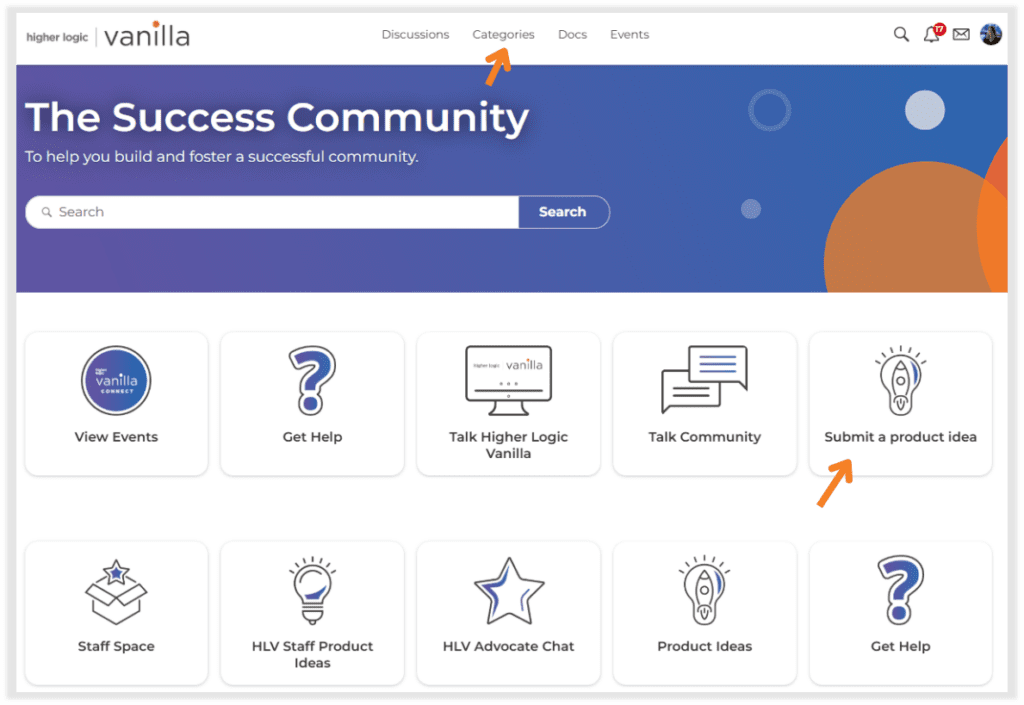
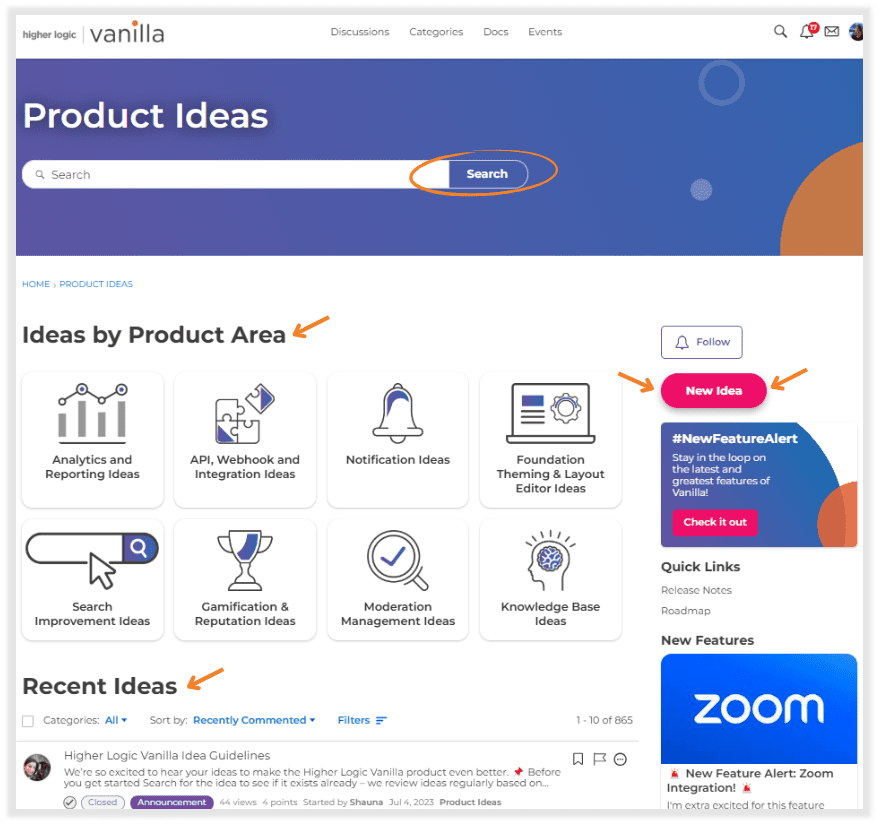
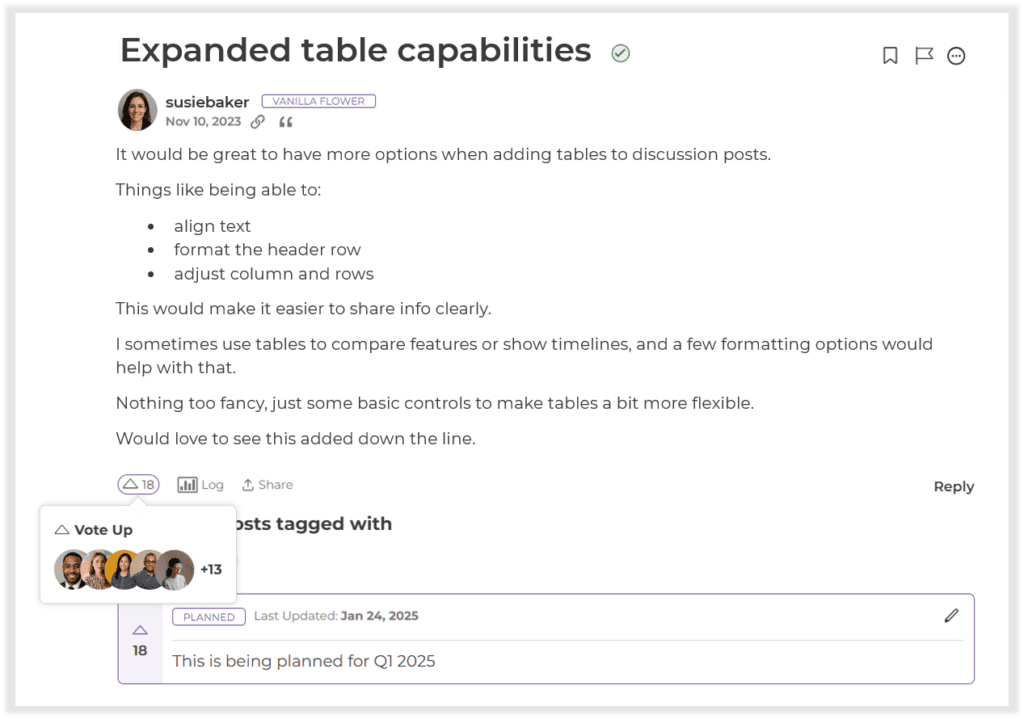

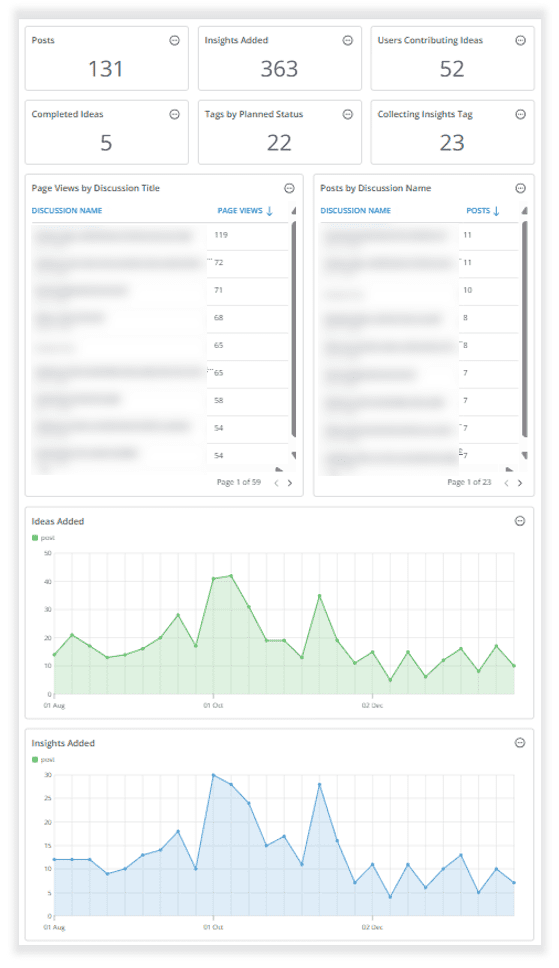
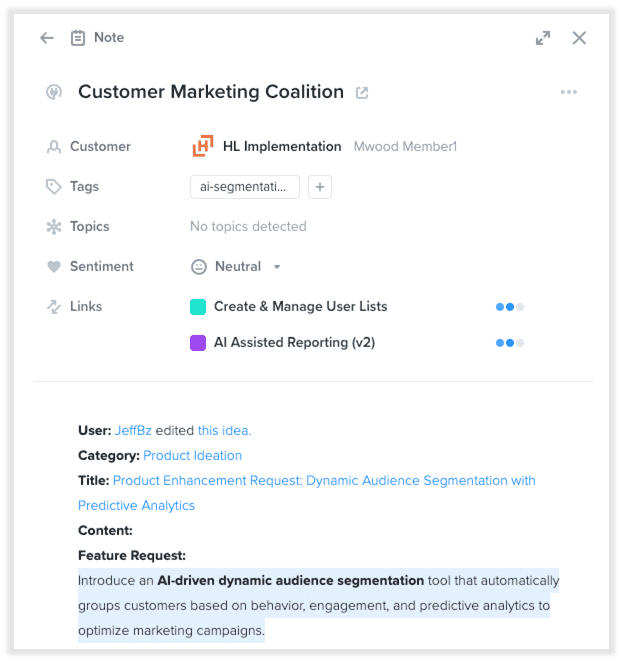
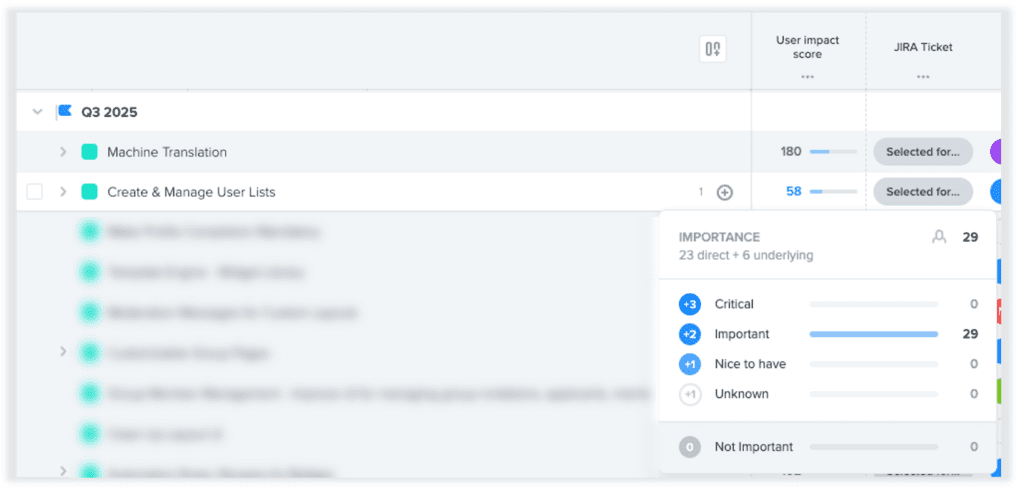

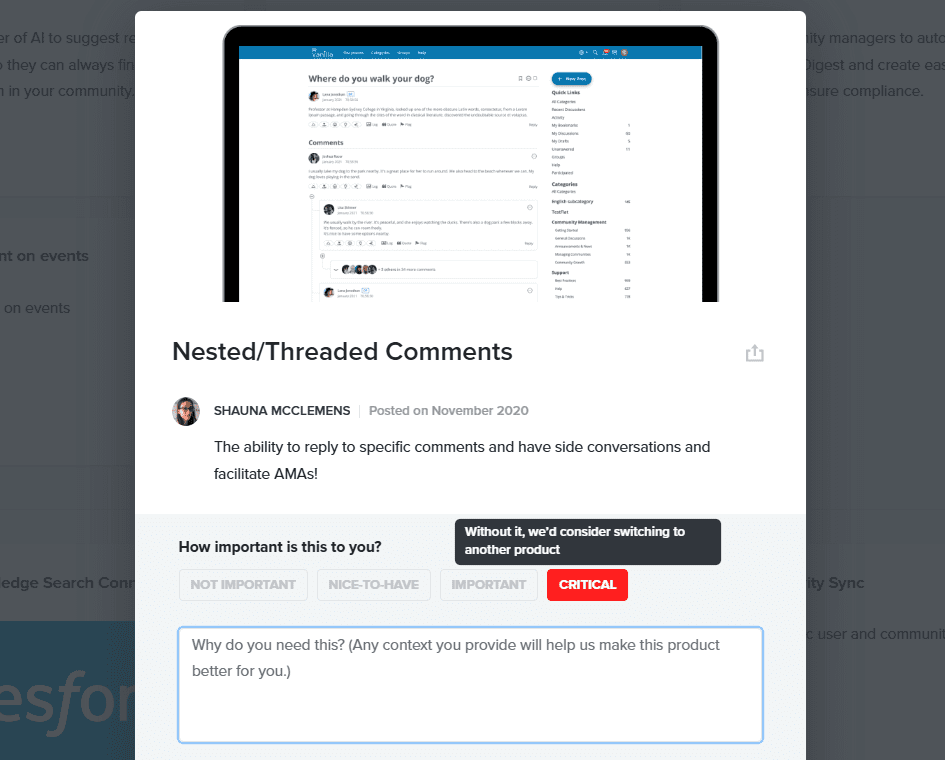
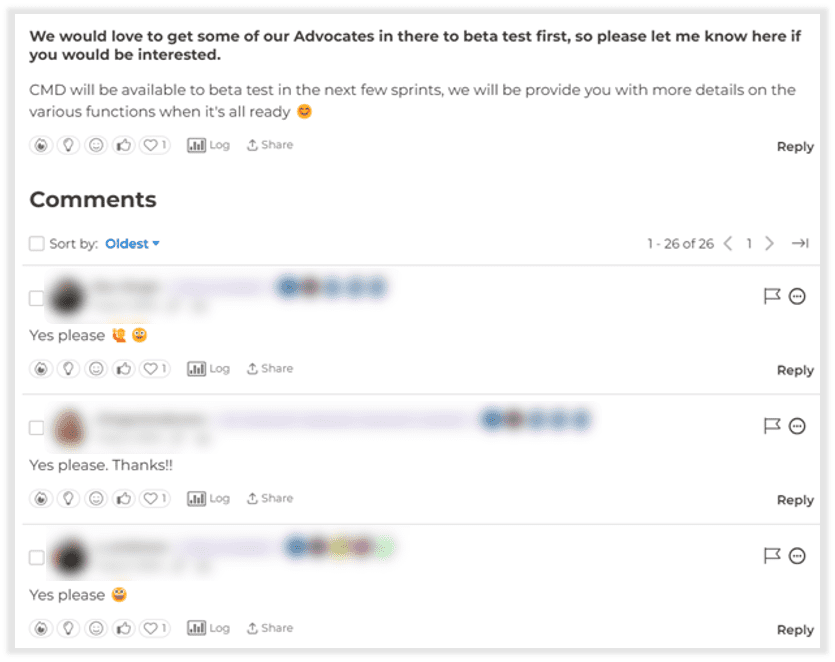




-1.png?width=2000&name=RIGHT%20SIZE%20(37)-1.png)

